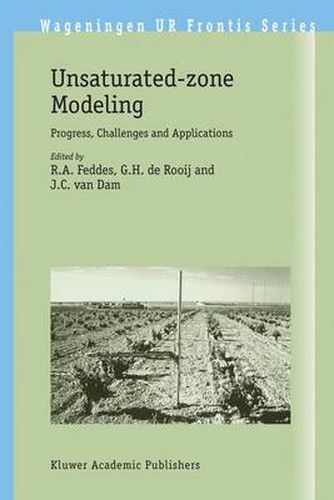Readings Newsletter
Become a Readings Member to make your shopping experience even easier.
Sign in or sign up for free!
You’re not far away from qualifying for FREE standard shipping within Australia
You’ve qualified for FREE standard shipping within Australia
The cart is loading…






This title is printed to order. This book may have been self-published. If so, we cannot guarantee the quality of the content. In the main most books will have gone through the editing process however some may not. We therefore suggest that you be aware of this before ordering this book. If in doubt check either the author or publisher’s details as we are unable to accept any returns unless they are faulty. Please contact us if you have any questions.
Mankind has manipulated the quantity and quality of soil water for millennia. Food production was massively increased through fertilization, irrigation and drainage. But malpractice also caused degradation of immense areas of once fertile land, rendering it totally unproductive for many generations. In populated areas, the pollutant load ever more often exceeds the soil’s capacity for buffering and retention, and large volumes of potable groundwater have been polluted or are threatened to be polluted in the foreseeable future. In the past decades, the role of soil water in climate patterns has been recognized but not yet fully understood.
The soil-science community responded to this diversity of issues by developing numerical models to simulate the behavior of water and solutes in soils. These models helped improve our understanding of unsaturated-zone processes and develop sustainable land-management practices.
Aimed at professional soil scientists, soil-water modelers, irrigation engineers etc., this book discusses our progress in soil-water modeling. Top scientists present case studies, overviews and analyses of strengths, weaknesses, opportunities and threats related to soil-water modeling. The contributions cover a wide range of spatial scales, and discuss fundamental aspects of unsaturated-zone modeling as well as issues related to the application of models to real-world problems.
$9.00 standard shipping within Australia
FREE standard shipping within Australia for orders over $100.00
Express & International shipping calculated at checkout
This title is printed to order. This book may have been self-published. If so, we cannot guarantee the quality of the content. In the main most books will have gone through the editing process however some may not. We therefore suggest that you be aware of this before ordering this book. If in doubt check either the author or publisher’s details as we are unable to accept any returns unless they are faulty. Please contact us if you have any questions.
Mankind has manipulated the quantity and quality of soil water for millennia. Food production was massively increased through fertilization, irrigation and drainage. But malpractice also caused degradation of immense areas of once fertile land, rendering it totally unproductive for many generations. In populated areas, the pollutant load ever more often exceeds the soil’s capacity for buffering and retention, and large volumes of potable groundwater have been polluted or are threatened to be polluted in the foreseeable future. In the past decades, the role of soil water in climate patterns has been recognized but not yet fully understood.
The soil-science community responded to this diversity of issues by developing numerical models to simulate the behavior of water and solutes in soils. These models helped improve our understanding of unsaturated-zone processes and develop sustainable land-management practices.
Aimed at professional soil scientists, soil-water modelers, irrigation engineers etc., this book discusses our progress in soil-water modeling. Top scientists present case studies, overviews and analyses of strengths, weaknesses, opportunities and threats related to soil-water modeling. The contributions cover a wide range of spatial scales, and discuss fundamental aspects of unsaturated-zone modeling as well as issues related to the application of models to real-world problems.